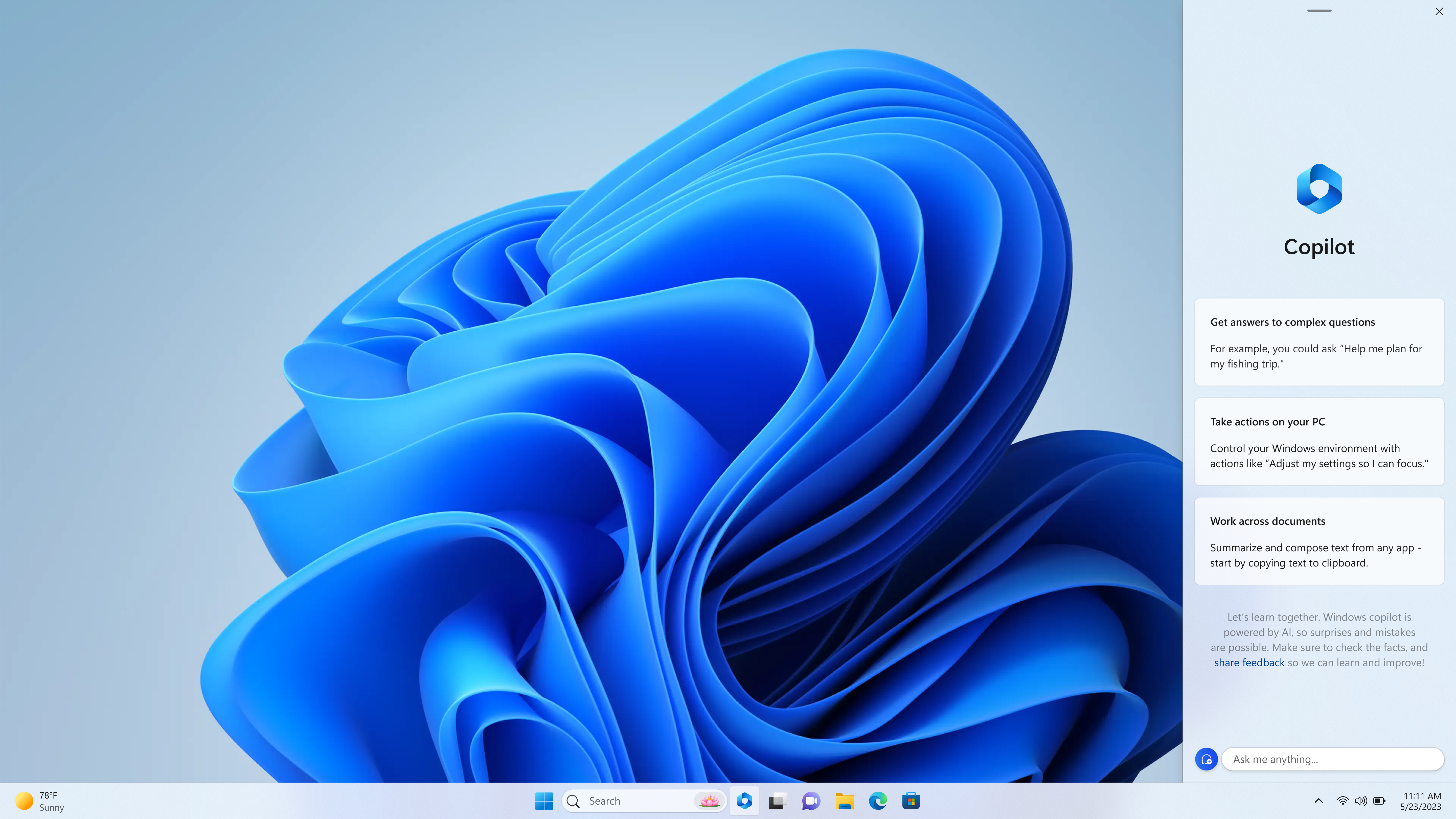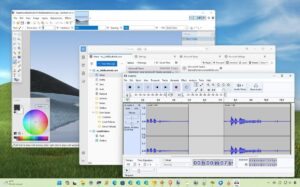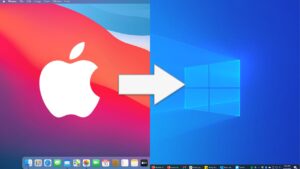To open Disk Management on Windows 11, right-click the Start button and select Disk Management from the context menu. Disk Management is a built-in tool in Windows 11 that allows you to manage your disk drives, partitions, and volumes.
It is a useful utility for creating, formatting, and deleting partitions, as well as changing drive letters and paths. Disk Management also enables you to perform tasks such as extending or shrinking volumes, initializing new disks, and converting disks between different formats, making it an essential tool for managing your storage devices on Windows 11.
By understanding how to open and use Disk Management, you can better organize and optimize your computer’s storage space to meet your needs.
Why Use Disk Management
Understand The Benefits
Get ready to explore the powerful world of Disk Management in Windows 11. It’s a helpful tool that allows you to manage your hard drives and storage devices efficiently. By using Disk Management, you can easily organize and optimize your storage to keep your system running smoothly and ensure optimal performance. So, the benefits of Disk Management are definitely worth delving into.
Get Control Over Storage Space
With Disk Management, you have the power to take charge of your storage space. You can create, delete, format, resize, and manage partitions on your hard drives. This level of control enables you to optimize your storage and ensure that your data is organized in a way that suits your needs. By using Disk Management, you can effectively maximize the use of your storage devices without any hassle.
:max_bytes(150000):strip_icc()/control-panel-results-start-menu-windows-11-689449b69f3b4115aa170397a43d9ea2.jpg)
Credit: www.lifewire.com
Accessing Disk Management
Accessing Disk Management on Windows 11 allows you to manage your storage devices, partitions, and volumes for optimal performance and organization. In this blog post, we will explore different methods to access Disk Management, providing you with the flexibility to choose the approach that best suits your preferences.
Using The Start Menu
To access Disk Management via the Start Menu, follow these simple steps:
- Click on the Start button in the taskbar to open the Start Menu.
- Type “Disk Management” in the search bar located at the bottom of the Start Menu.
- Select “Create and format hard disk partitions” from the search results to launch Disk Management.
Using The Run Command
To open Disk Management using the Run command, perform the following:
- Press the Windows key + R to open the Run dialog box.
- Enter “diskmgmt.msc” into the Run box and press Enter or click OK.
- Upon completion, Disk Management will open, allowing you to manage your disks and partitions effectively.
Navigating Disk Management
Discovering how to access Disk Management on Windows 11 is vital for efficient disk management and organization. Mastering this feature allows users to effortlessly navigate and optimize their storage devices for a seamless computing experience.
Viewing Disks And Partitions
In order to effectively manage your disk storage on Windows 11, it is essential to understand how to navigate the Disk Management tool. This powerful tool allows you to view and manage your disks and partitions with ease. Let’s dive into the first aspect of navigating Disk Management: viewing disks and partitions. When you open Disk Management, you will be presented with a comprehensive overview of all the disks and partitions connected to your system. This includes both internal and external storage devices. By closely examining this information, you can gain valuable insights into your current disk setup. One way to view all the disks and partitions is by utilizing the table format. This format provides a clear and organized display of the essential details you need. The table includes columns such as Disk Number, Status, Size, Free Space, and File System. The Disk Number column assigns a unique identifier to each disk, making it easier to differentiate between them. Another useful feature is the graphical representation of disks and partitions. Disk Management provides a visual representation of your disks, displaying them as colorful bars. Each bar represents a partition, with the length of the bar indicating the size of the partition. By examining this visual representation, you can quickly identify the storage allocation on your disks.Understanding Disk Information
Now that you are familiar with how to view disks and partitions, let’s delve into understanding the disk information displayed in Disk Management. This knowledge is crucial for making informed decisions regarding your disk management. To begin, the Status column provides insight into the health of each disk. It displays various statuses such as Online, Offline, or Unallocated. A disk marked as Online indicates that it is operating normally, while an Offline or Unallocated status might indicate a problem that needs attention. The Size column represents the total capacity of each disk or partition, allowing you to ascertain the amount of storage available. Alongside the Size column, the Free Space column highlights the unused or available storage on a disk or partition. This information enables you to determine how much space is currently being utilized and how much is available for use. Finally, the File System column displays the formatting of each partition. Common file systems include NTFS, exFAT, and FAT32. Understanding the file system is important as it dictates the compatibility and capabilities of the partition. By comprehending the wealth of information presented in Disk Management, you can effectively navigate and manage your disks and partitions on Windows 11. Armed with this knowledge, you can optimize your storage setup to enhance system performance and ensure efficient usage of disk space.
Credit: blogs.windows.com
Basic Disk Management Tasks
Disk management is a crucial aspect of maintaining and organizing your storage on Windows 11. Whether you need to create a new partition or extend or shrink an existing partition, understanding these basic disk management tasks can help you optimize your computer’s storage space and improve overall performance. In this article, we will explore how to perform these tasks using the built-in Disk Management tool in Windows 11.
Creating A New Partition
Creating a new partition on your Windows 11 computer allows you to separate and organize your data efficiently. Follow these simple steps to create a new partition using Disk Management:
- Open Disk Management by right-clicking on the Start button and selecting “Disk Management” from the context menu. Alternatively, you can press Windows + X keys and choose “Disk Management” from the list.
- Locate the unallocated space or free space on your disk where you want to create the new partition.
- Right-click on the unallocated space and select “New Simple Volume” from the options.
- Follow the instructions in the New Simple Volume Wizard to specify the size, assign a drive letter or mount point, and format the new partition with a file system.
- Once the process is complete, you will have a new partition ready to use for storing your files and data.
Extending Or Shrinking A Partition
Extending or shrinking a partition allows you to adjust the size of your existing partitions to better accommodate your storage needs. Here’s how you can extend or shrink a partition using Disk Management:
- Open Disk Management by right-clicking on the Start button and selecting “Disk Management” from the context menu. Alternatively, you can press Windows + X keys and choose “Disk Management” from the list.
- Locate the partition you want to extend or shrink.
- Right-click on the partition and select “Extend Volume” or “Shrink Volume” depending on your requirements.
- Follow the prompts in the Extend Volume or Shrink Volume wizard to specify the amount of space you want to add or remove from the partition.
- Confirm the changes, and Disk Management will adjust the partition accordingly.
By being familiar with these basic disk management tasks, you can confidently maximize your storage space and keep your files organized on Windows 11. Whether you need to create new partitions or adjust existing ones, the Disk Management tool offers a user-friendly interface to help you manage your disks efficiently.
Advanced Disk Management Options
Advanced Disk Management Options in Windows 11 empower users with powerful capabilities to efficiently manage their storage drives. Whether you want to resize virtual hard disks or convert disks to different formats, Windows 11 provides a seamless experience for handling complex disk management tasks. Let’s explore these advanced options in greater detail.
Resizing Virtual Hard Disks
Resizing virtual hard disks becomes effortless with Windows 11’s advanced disk management tools. You can easily adjust the size of your virtual hard disks to optimize storage usage and accommodate changing needs. Windows 11 enables you to both expand and shrink virtual hard disks with just a few simple steps.
Expanding a virtual hard disk allows you to increase its storage capacity, providing more room for your files, applications, and operating system. On the other hand, if you find yourself with unused space on a virtual hard disk, shrinking it can help you reclaim valuable storage resources.
To resize a virtual hard disk in Windows 11, follow these simple steps:
- Open Disk Management by right-clicking on the Start button and selecting “Disk Management”.
- Locate the virtual hard disk you want to resize in the disk list.
- Right-click on the virtual hard disk and select “Resize”.
- Specify the new size for the virtual hard disk and follow the on-screen instructions to complete the resizing process.
Converting Disks To Different Formats
In addition to resizing virtual hard disks, Windows 11 also offers the ability to convert disks to different formats, providing increased compatibility and flexibility.
For instance, you may have a disk in the traditional Master Boot Record (MBR) format and want to convert it to the newer GUID Partition Table (GPT) format, which supports larger disk sizes and more partitions. Or you might have a disk in the basic disk format and wish to convert it to the dynamic disk format, which supports advanced features such as software RAID and dynamic volumes.
Converting disks to different formats is a straightforward process in Windows 11. Follow these steps to convert a disk:
- Open Disk Management by right-clicking on the Start button and selecting “Disk Management”.
- Locate the disk you want to convert in the disk list.
- Right-click on the disk and select “Convert to GPT” or “Convert to Dynamic Disk” based on your requirements.
- Ensure you have backed up all important data before proceeding.
- Follow the on-screen instructions to complete the conversion process.
With these advanced disk management options, Windows 11 empowers users with greater control over their storage devices. Whether you need to resize virtual hard disks or convert disks to different formats, Windows 11 provides a user-friendly interface and robust functionality to meet your needs.

Credit: keys.direct
Frequently Asked Questions For Open Disk Management On Windows 11
How Do I Open Disk Management On Windows 11?
To open Disk Management on Windows 11, right-click on the Start button and select “Disk Management” from the menu. You can also press the Windows key + X and choose “Disk Management” from the Power User menu.
Why Is Disk Management Important In Windows 11?
Disk Management is important in Windows 11 because it allows you to manage your hard drives and partitions. You can create, delete, format, and resize partitions, as well as assign drive letters and change file systems. It is useful for organizing and optimizing your storage space.
How Can I Resize A Partition In Disk Management On Windows 11?
To resize a partition in Disk Management on Windows 11, right-click on the partition and choose “Extend Volume” or “Shrink Volume” depending on your needs. Follow the prompts to specify the desired size and apply the changes. Be cautious as data loss can occur if not done properly.
Conclusion
Accessing Disk Management on Windows 11 is a straightforward process that allows you to efficiently manage your disk drives, partitions, and volumes. By following the steps outlined in this blog post, you can easily open Disk Management and perform various tasks such as creating, deleting, formatting, and resizing partitions.
With this powerful tool at your disposal, you can effectively optimize your disk space and enhance the performance of your Windows 11 system.



